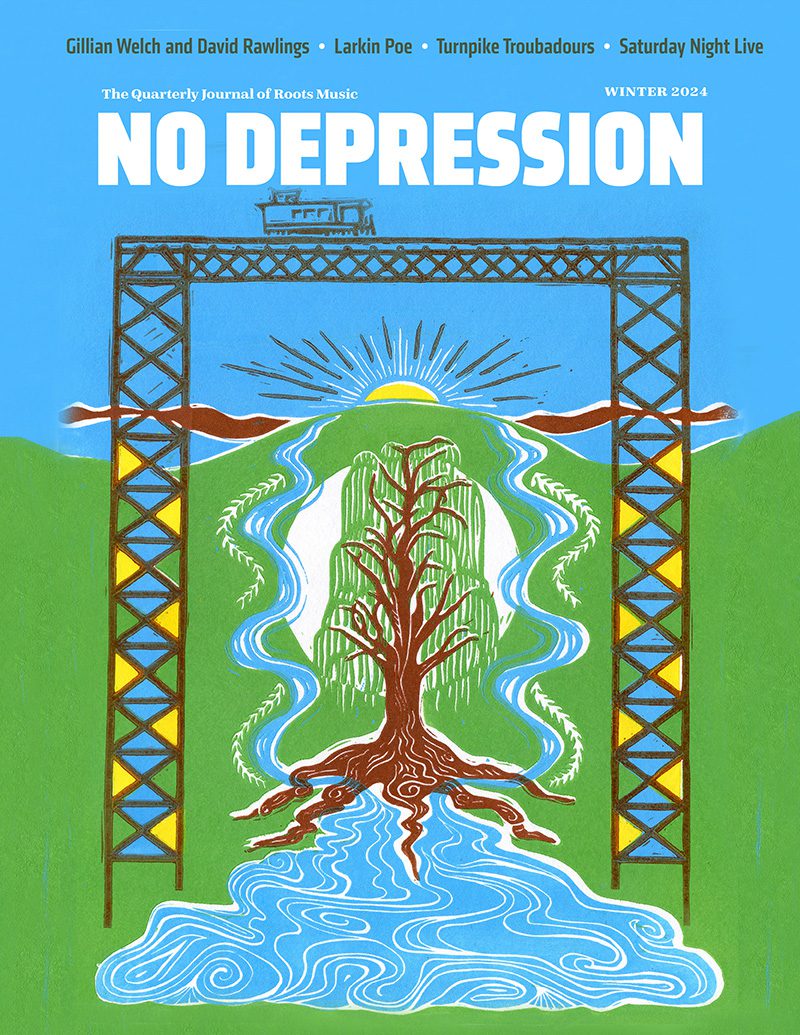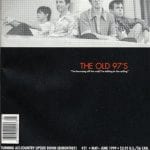Mandy Barnett – Sweet Dreams Are Made Of This
Last October, Sire Records threw a party 30 miles outside Nashville to showcase Mandy Barnett’s nearly completed album, I’ve Got A Right To Cry. The event took place at Bradley’s Barn, the renowned recording studio of the project’s producer, the late Owen Bradley. A countrypolitan string section and chorus, both of which appeared on the album, accompanied Barnett onstage. So did most of the pickers who played on the disc, including Buddy Harmon, Pig Robbins, and Bradley’s younger brother, Harold — so-called “A-Teamers” who worked hundreds of sessions overseen by Bradley back when he and Chet Atkins were inventing the Nashville Sound in the 1950s and ’60s.
Barnett was radiant. Dressed in a vintage velvet gown, she was the image of Patsy Cline, the Bradley protege she portrayed a few years ago in the Ryman Auditorium’s theatrical production of Always…Patsy Cline. Barnett didn’t perform any of Cline’s hits that night, though all but two of the songs she did sing were back-in-the-day hits or misses by the likes of Don Gibson, Carl Smith and Ray Price. It made for a delightful evening, and Barnett was in devastatingly fine voice throughout. But the proceedings also had a whiff of nostalgia, a tag that’s sure to dog I’ve Got A Right To Cry, which came out April 13 and seems destined for the retro ghetto.
Country singers have always referred back to their antecedents, though. Granted, most of them don’t dress in period garb, or spend two years conjuring another singer’s ghost, as Barnett has done. Still, whether it’s George Strait invoking Lefty Frizzell, Gram Parsons covering Conway Twitty, or Loretta Lynn channeling Kitty Wells, most honky-tonkers aren’t afraid to wear their influences on their sleeves.
Barnett isn’t in the same league with those singers. Not yet, anyway. But to write off her shimmering new record as retro would not only be reductive, it would take a myopic view of the music, one that casts country’s apparent polarities — i.e., tradition vs. innovation, twang vs. pop — in stone, rather than as currents that ebb and flow within a single stream.
This isn’t to deny country music’s discrete stylistic phases; it’s just that these moments — as well as the way singers personify them — aren’t as undiluted, or easy to pigeonhole, as some historians would have us think. “Just because you pay homage to something doesn’t mean that it’s retro,” insists Barnett, 23, sitting in the Music Row bungalow of her publicist. “When we went in to make this record, I didn’t tell Owen, ‘I want this to be an old-sounding record.’ I didn’t say to the musicians, ‘I want y’all to play old.’ The most important thing to us was that the album be good — not new or old, just good. Owen always told me that there are only two kinds of music: good and bad.”
Bradley, of course, knew what he was talking about. During his 50 years as a producer, he made scores of “good” records with Ernest Tubb, Red Foley, Bill Monroe, Kitty Wells, Webb Pierce, Brenda Lee, Patsy Cline, Loretta Lynn, Conway Twitty, and numerous others. In each case, Bradley tailored his production to the strengths of the singer. With Tubb and Pierce, he kept things lean and gutbucket; with Cline, Lee, and Twitty — and later, with k. d. lang (whose first band, after all, was called the reclines) — he opted for uptown arrangements that suited their soulful styles. With Lynn, Bradley insisted that she not hide her Butcher Hollow drawl, and encouraged her to write her own material as well.
Bradley, who at the time they made I’ve Got A Right To Cry was 60 years Barnett’s senior, approached working with Barnett — the last artist he produced before he died in January 1998 — with much the same perspicacity. “Owen spent a lot of time trying to figure me out,” Barnett recalls. “And not just looking for songs for the record, but talking and sitting around playing and singing songs that we liked. He learned a lot about me through that. And he learned very quickly that I like ballads with a lot of range — songs that say things that pull at your heartstrings or make you sadder, songs that evoke some sort of emotion.”
Barnett got her first taste of emotive music from her grandmother, whose pop-and-jazz-vocal records she heard while growing up in Crossville, Tennessee, a town of 7,000 located on the Cumberland Plateau, 100 miles or so east of Nashville. “I was really drawn to the strings, to the arrangements and the singers and the chord changes,” Barnett recalls. “A lot of times I didn’t even know what I was listening to. It might have been Jim Nabors singing ‘Strangers In The Night’, or Kate Smith singing hymns. [My grandmother] played a lot of different stuff: Ella Fitzgerald and Harry James — a lot of people that I wasn’t familiar with, but boy, those songs sure stayed with me.”
Not surprisingly, Barnett started singing at an early age. She debuted on the Grand Ole Opry when she was 12 and had a development deal with Capitol Records’ Jimmy Bowen when she was 14. Barnett never got to sing anything from her grandmother’s record collection, though, until, at age 18, she played the lead in Always. “I had sung those type songs since I was 8, 9, 10 years old,” she says, referring to the music of Cline and her contemporaries. “But then, when I got my record deal, everything changed. I started singing different type songs.” Songs, Barnett adds, that she couldn’t put her heart into.
“When I was on Capitol, none of us really knew what we were doing,” she explains. “I was so young. I just kind of put myself in their hands and let them tell me what to do. I would have been in a much better situation if I had been a little older, and a little more experienced. Bowen was always telling me, ‘You’ve got to find yourself.’ And I was like, ‘How do I do that?’ As it was, all I had to do was sing songs that I like.
“So you can imagine how great it felt to go out there every night and sing 25 of the greatest songs in country music,” Barnett continues, alluding to the classic honky-tonk and western swing she sang during the two-year run of Always. “From ‘Faded Love’ and ‘San Antonio Rose’ to ‘Sweet Dreams’ and ‘Crazy’, I thought, ‘These are some of the most beautiful songs ever written. I should be able to record songs this beautiful on my own. Patsy Cline may have done them, but a lot of other people have done them, too.'”




